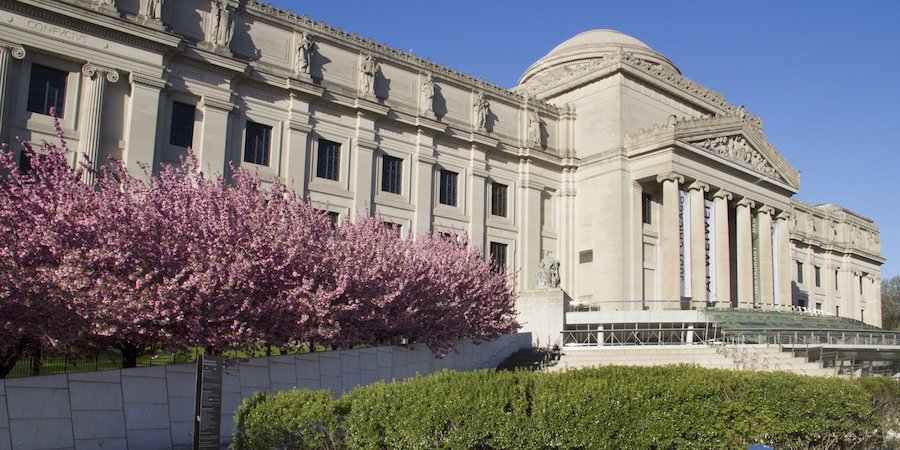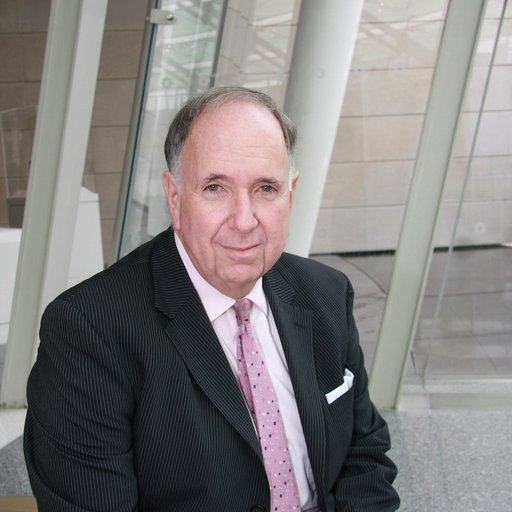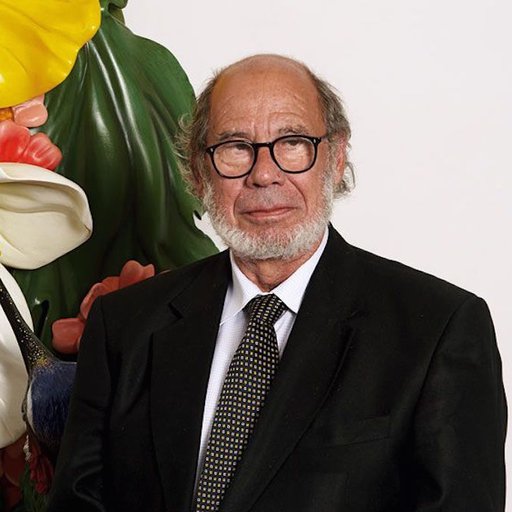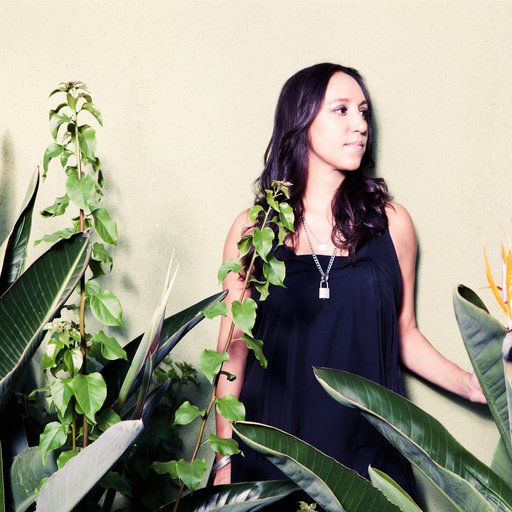What are the new growth opportunities for a universal museum in the digitally driven 21st century? In the second half of our interview with the outgoing Brooklyn Museum director Arnold Lehman, who is stepping down this June after 17 widely influential years of leading the institution, we spoke to him about the way exhibitions are evolving to embrace popular culture, the challenges for whoever his successor will be, and the smartest way for museums to harness the Web.
Related Links:
Expert Eye: How Arnold Lehman Transformed the Brooklyn Museum From a “Startup” to a Cultural Juggernaut
You’ve often been called a “populist” director, and the exhibitions you’ve held have included a number of big-top productions that helped redefine the kinds of shows a universal museum could put on—shows like “Hip-Hop Nation” in 2000, “Star Wars: The Magic of Myth,” and the current “Killer Heels.” Where did this approach to exhibitions come from?
There’s something that’s important for people to know about the Brooklyn Museum, which is that we have a long history of doing shows on popular culture. I didn’t begin that at the museum—we’ve done major shows in that direction for decades. These are just some of the more recent of those kinds of shows that we’ve done and feel are appropriate for the museum and appropriate for our brand. We really look at that first, before we get into the discussion about who it’s going to attract and what segments of our community it will interest. Only at the very end of that conversation do we have a discussion about the number of people that it might attract.
All of this together helps to form a picture of what and whom the exhibition is serving. It’s part of how we reinforce the museum’s brand and how we hopefully continue to grow our audience and grow loyalty to the museum among our members, our donors, and the people who come in to see one show or another. It’s a long and involved process that we follow with every show, but the issue of us doing popular culture exhibitions—to which someone might say, “It’s just a popular exhibition”—is nothing new for us.
We’re really pleased with the fact that almost every time we do them they’re very successful, because they also connect in different ways to our collection or to our program. We’re always very excited when we’re about to do a show dealing with popular culture, and we put a lot into it, as with “Killer Heels.”
Since the Met’s 1978 Tutankhamun show established the model of the museum blockbuster and proved that there was an enormous popular crowd to tap into, these crowd-pleasing shows—like Thomas Krens’s famous motorcycle exhibition at the Guggenheim, Jeffrey Deitch’s “Art in the Streets” at MOCA, and the current Björk survey at MoMA—have had the paradoxical effect of being tremendously successful with audiences and yet scorned by critics. What explains this disconnect between the critical reception and the popular reception?
I think the question there is really what 21st-century museum paradigm one ascribes to. If the paradigm is more or less the same as it was at the beginning of the 20th century, then I can understand where someone may be upset or concerned or have issues. But I think if the paradigm is more in keeping with the first decade and a half of the 21st century, then that involves museums taking a broader view of the world around them. You’ve used the word “inclusive,” so I’ll use it here: those institutions are willing to be more inclusive in what they consider art. Those who don’t share that view say that what they’re doing is entertainment, not art.
Where did this shift come from? Does it have anything to do with the financial crisis of a few years back, when museums nationwide were in dire straits and desperate for revenue?
It moves slowly, and it embraces different institutions at different times. Our paradigm of including shows of popular culture started 50 years ago, maybe more than that. Others may be more recent. I can’t say when it started, but I just know that from some understanding of what’s happening in the world around us, that paradigm is probably more in tune with what’s happening today than the other.
Do you see this as a tendency that is going to continue to spread in museums in the United States, or is this rather a global trend? What is the scope of this paradigm shift?
I think you see exhibitions in institutions today that have been considered pretty conservative or staid, whatever word you want to apply, and that compare old material and new material and even venture into the realm of popular culture. But, again, it’s really hard to answer that question. Every institution is different, all of their timeframes are different, and of course there are some institutions that can go backwards and forwards. Really, all I can talk about with any degree of authority is Brooklyn. Everyone needs to call their own tune and work within their own context.
You were talking earlier about education as something the Brooklyn Museum has really championed and been a leader in. Another area where the museum has been strikingly innovative is your embrace of digital outreach over the past decade, becoming a leader in that field as well, from shows like the “Click: A Crowd-Curated Exhibition” photo survey that was drawn from online submissions to your very robust social media campaigns. Now your digital director, Shelley Bernstein, says the museum has moved a bit away from an emphasis on social-media engagement of audiences outside the museum and instead retrenched a bit to focus on enhancing the in-museum experience itself. What happened with the digital campaign, and what were some of the learnings that you took away from this period?
Shelley is great, and she knows what’s going on here much better than I do because it starts with her and her staff in so many instances. But it’s not that we are not continuing with a lot of social media and outreach—what we are doing is taking a new step to better engage the visitors in the building, a step that’s not available to people outside the building. This is all part of an program called the V.E.I., or the Visitor Experience Initiative, that we started a couple years ago that talks about the visitor experience and how we can better serve the people that are in the building.
How can we give them a deeper, richer, and more engaging experience while they’re here, rather than just scratching the surface? As I’m sure you know, we were very proud to have received a major grant from Bloomberg Philanthropies that has allowed us to investigate this area and do what we’re doing right now, which is creating an app that will allow a visitor in the building to ask questions in real time about objects in the building and get answers in real time.
Answers from a person or from a computer?
From a person. I can’t say more about it now, but this app is going to make its appearance in early June. We’re doing a lot of other things around this. It doesn’t create a barrier, but it does suggest that your experience of the museum can be richer if you come on inside.
That would seem to make a lot of sense in terms of growing attendance numbers, too.
That’s something everyone has been concerned about for a decade. How much can you put online without making people feel they don’t need to come into the museum? How can you generate new members and new friends without having them come inside? We’re just going about it very directly, saying that we’re going to give you a lot of stuff online, so if you live in California or Illinois or Honduras or Egypt you can still see something—but for the full experience, come to the museum. That’s what this new app is about. In a funny sense, it also redirects some energy from the purely technological and digital to a more human interaction.
Now the museum has a new funding and renovation campaign around the corner, and you’ve decided that this is the right time to step down after 17 years and let a new director shoulder this new construction and capital-raising burden.
I don’t consider raising capital money to be a burden!
You’ve obviously been able to do it really well.
There’s nothing I love to do more than ask people for money. I don’t think it's a skill, it’s just an annoying habit of mine.
What would you say are some of the most substantial challenges that await whoever your successor will be?
It’s far from just a capital campaign. There’s a program that’s been developed at the museum, and my successor will have to look at that program and see if she or he is in sync with that program. Part of that is figuring out how to continue to grow our audience, how to continue to grow the number of our friends on every different level, how to make sure that we maximize the value of our great building, and how to maximize the experience of our visitors. There are a lot of challenges ahead. Behind all these challenges is the question of how an institution can continue to excel, programmatically and in terms of its own structure, into the future.
The way to do that, in part at least, is to have a lot of smart people and a lot of available resources. When such a campaign actually happens—I have no idea when that will be, it’s not at all necessarily happening next year—we have to decide what’s needed for the museum. That’s the exciting part for a new director—working with trustees and staff to come up with a plan for the museum as it moves into the third decade of the 21st century.
What advice would you have for this person? Is there a cardinal piece of wisdom that you’ve gathered over these two decades?
Yes, and, thinking about it for a moment, I would say there are two. One is: listen. The second is: figure out how to get by on under four hours of sleep. Basically, you have to listen to what people are telling you, and you have to have a lot of energy.
Supporting Brooklyn’s artists has been a key part of your tenure. I’ve already been interested in the fact that in 1952 the museum held something called the Brooklyn Biennial, which has never been reprised since. Why has there never been another Brooklyn Biennial, and is this something that ever might happen in the future?
As far as the second part of your question, you’ll have to ask my successor, because it’s going to be my successor’s decision as to what happens in that direction and in many others. But I’ll tell you my reaction to biennials and triennials and whatever. I think there are a lot of them. I enjoy going to them. I enjoy going to the Whitney, I enjoy going to Venice when I can get there, I enjoy going to dOCUMENTA. I think they ask a lot from both an institution and, in a way, from the artists involved. It’s set up on a certain grid, and you’re expecting certain things, if nothing other than holding them every two or three years. You have to be ready commit to having it every two or three or even five years. My approach is one where instead you do exhibitions like that—larger shows that explore what’s happening in a borough, a city, a state, a nation, the world—when it’s appropriate to do them, when you have the right talent both on the staffing side and on the creative side.
That seems to make sense.
Well, it may or may not make a lot of sense. Have you spoken to Adam Weinberg? I’m sure Adam would give a lot of really good reasons that I probably would agree with why the Whitney Biennial is so important to the Whitney. In that case, it’s really part of their brand. We don’t have a biennial in our brand, unless you’re thinking of something that happened 60-plus years ago. A lot of things happened 60 years ago that we don’t do today, not just that.
I have two last questions for you: what is your favorite show that you’ve produced over your tenure, and what are you doing next?
It’s very easy to answer both. I have no idea what my favorite show was, to be honest. I have done so many that it’s impossible for me to answer that question, and if I did wouldn’t you think, “What did he do for the other 17 years?” All the rest would be chopped liver! As far as what I’m doing next, I don’t know, but I’m certainly doing something. As my wife told me when we got married and then told me again the morning I announced my retirement: “For better, for worse, but not for lunch.”



























